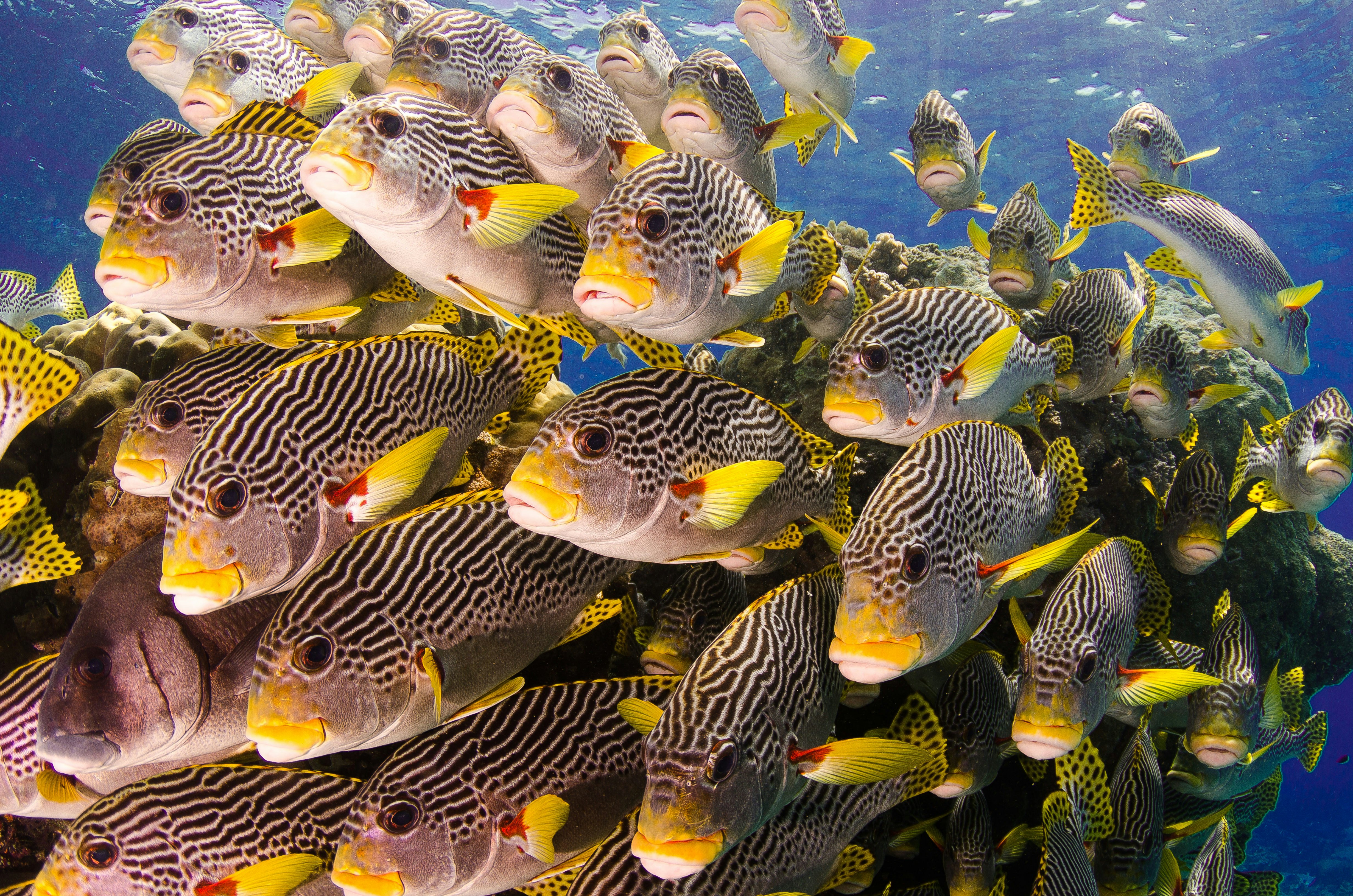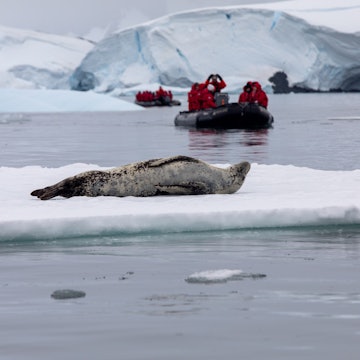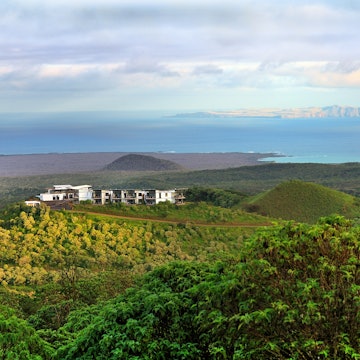

The pristine North Beach on Heron Island. Bruce Hood / Getty Images
Australia's Great Barrier Reef is a 2300km-long ribbon of colour and life, but the threats to the world's largest living organism are now as well known as its beauties. Coral bleaching events in 2016 and 2017 saw massive coral loss, and two years ago Unesco pondered placing the reef on its List of World Heritage in Danger.
Caring for the reef begins at an individual level, and there are ways to minimise the impact of a visit, which can be as simple as choosing your location. Up to 85% of visitors see the Great Barrier Reef from Cairns or in the Whitsunday Islands, so head elsewhere along the Queensland coast and islands and you're more likely to ensure that the reef is unaffected by your visit.

Live aboard a dive boat from Townsville
In Townsville, 350km south of Cairns, you can join the city's only live-aboard reef boat, operated by Adrenalin Snorkel and Dive. Two- and three-day dive and snorkel trips take in little-visited areas of the central reef, as well as dives at the SS Yongala, arguably Australia's best wreck dive. Adrenalin also run day trips to the coral gardens and canyons at Lodestone Reef, offshore from Townsville. Further south, Heron Island and Lady Elliot Island resorts provide quiet patches of coral as well as sustainable stays.
Use renewable energy on Lady Elliot Island
Lady Elliot Island sits at the reef's southern end, and is best known for its manta rays and sea turtles, but it brings the added benefit of a resort with impeccable eco-credentials. The Lady Elliot Island Eco Resort has dedicated itself to running on 100% renewable energy by the end of 2020, powered by more than 400 solar panels, and carrying out on-site composting. It runs a Climate Change Trail, an hour-long walk with interpretation about the likely impacts of a warming planet on a coral cay.
Visit a research centre on Heron Island
The tiny coral cay of Heron Island is famed for its nesting turtles from January through May, but also has reef snorkelling straight off the beach and more than 20 dive sites around the island – Jacques Cousteau once rated Heron as one of his 10 favourite dive sites. The island is home to a resort and a University of Queensland research station, with tours of the centre on offer to guests, giving them the chance to take home reef knowledge as a souvenir.
See sustainable waste management at Lizard Island National Park
At the other end of the reef, 250km north of Cairns, Lizard Island Resort sits on an island that's been a national park since 1937. The resort shares the 1013-hectare island with a coral-reef research station run by the Australian Museum, and also offers tours of the station to guests. Lizard Island sits right on the Great Barrier Reef, making sustainable measures vital. In September 2018, the resort eliminated the use of all plastic bottles and straws. It recycles around 60% of its waste, with other waste shipped to the mainland on a barge.
Learn before you go
Before setting out for the reef, take the time to learn a little more about it. In Cairns, Reef Teach runs information shows three evenings a week, ostensibly showing visitors features and life they'll see on a reef trip, but under a philosophy that 'with learning comes appreciation' – the more you know, the more you'll appreciate and respect the reef.
Townsville's spectacular Reef HQ is the world's largest living-reef aquarium, but also operates as the Great Barrier Reef Marine Park Authority's (GBRMPA) national education centre (as well as running a turtle hospital), offering similar opportunities to swot up on the reef.

Use tour operators that support research
When you do head out into the water, the good news is that the GBRMPA only issues permits to tour operators with ecotourism certification, meaning that every reef excursion should already be sensitive and sustainable. Some operators, however, have taken things a step further.
Eye to Eye Marine Encounters, run by former commercial anglers, provides space for reef researchers and scientists on every one of its multi-day trips, with part of the cost of your trip going towards funding the research. One of the reef's largest tour operators, Quicksilver, has its own Reef Biosearch division that claims to be Australia's biggest employer of marine biologists outside of government agencies, and has maintained logbooks of reef observations since 1986.

Join conservation schemes
To get in on the conservation act during your visit, there are a number of citizen science projects to which you can contribute. The GBRMPA's Eye on the Reef app allows you to share photos and video of anything you think noteworthy – protected species, signs of bleaching, injured wildlife, the presence of the pestilent crown-of-thorns starfish – with the marine park authority, helping it build an active picture of reef conditions.
The University of Queensland's long-running CoralWatch programme provides you with a coral health chart, on which you match and record the colours of various corals as you snorkel or dive, entering the results into CoralWatch's app or website. Other citizen science projects include Redmap and Project Manta, which similarly involve sharing images from your diving and snorkelling excursions to respectively help build databases of species uncommon to the area and manta rays.
Take part in a clean-up programme
If you want to be even more hands-on in contributing to the reef's health, you can also join a clean-up programme. Volunteers are welcome at the likes of Eco Barge Clean Seas, which has cleared almost 200,000kg of marine debris from along the Whitsundays' coast and waters since 2009. The Tangaroa Blue Foundation lists volunteer opportunities with marine-debris clean-ups around Australia, with many of them focused on areas around the Great Barrier Reef.
You might also like:
6 beach cleans you can join in cities around the world
Sustainable travel: 6 ways to make a positive impact on your next trip
Into the green: 8 destinations for an eco-friendly escape
This article was first published November 2019, last updated January 2020.













